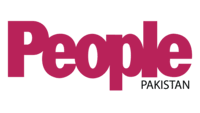Literacy rate is increasing in karachi. Are we heading towards the econmic growth and development activities?
According to the latest statistics released by the Pakistan Bureau of
Statistics, Karachi’s two districts, Central and Korangi, have the highest
literacy rate in the country after Islamabad and Rawalpindi.
The Pakistan Economic Survey 2020-21, on the other hand, mentions the
Pakistan Social and Living Standards Measurement. Which states that “the literacy rate of the population aged 10 years and above is pretty static at 60%
in 2019-20.”
However, according to provincial data, Punjab has the highest prevalence at
64 percent, followed by Sindh at 58 percent, Khyber Pakhtunkhwa at 55 percent,
and Balochistan at 46 percent.
As per the PBS census, Rawalpindi has the highest literacy rate, accounting
for 82.45 percent of its entire population. According to the statistics,
Rawalpindi’s male literacy rate is 88.02 percent, whereas its female literacy
rate is 76.79 percent. Similarly, the literacy rate in the capital’s rural
regions is 79.89 percent. On the other hand it is 84.48 percent in the overall
urban sections.
Following Rawalpindi, Karachi’s Central District was ranked second, with a
literacy rate of 81.52 percent of the entire population. There are 81.90
percent males and 81.13 percent females among them.The data also indicate the
literacy rate of transgender persons in each area. Transgender people have a
literacy rate of 47.98 percent in Karachi’s Central District.
Islamabad, Pakistan’s capital city, ranks third in terms of literacy rate.
The city’s populace is educated to the tune of 81.49 percent. There are 86.55
men and 75.83 women among them. Transgender people in Islamabad have a literacy
rate of 55.36 percent. As a result, Korangi is ranked fourth among highly
educated districts. It has an 80.19 percent literacy rate. There are 81.51 men,
76 women, and 57.86 transgender persons among them.
